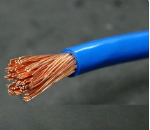
Aluminum alloy is widely used in fields such as aerospace, automobile manufacturing, and electronic equipment due to its lightweight, high strength, and good corrosion resistance. However, the electrical conductivity of aluminum alloy is relatively low, and its surface is prone to forming an oxide film, which can affect its electrical performance in certain applications. Consequently, the conductive oxidation process for aluminum alloy has emerged, aiming to improve the electrical conductivity of aluminum alloy through specific surface treatment technologies while maintaining its corrosion resistance. This article will introduce in detail the principle, methods, and industrial applications of the conductive oxidation process for aluminum alloy.
I. The Principle of Conductive Oxidation for Aluminum Alloy
When exposed to air, the surface of aluminum alloy quickly forms a natural layer of alumina film. Although this oxide film has good corrosion resistance, its insulating properties lead to poor electrical conductivity on the surface of the aluminum alloy. The conductive oxidation process involves applying a current to the aluminum alloy in a specific electrolyte, resulting in the formation of a modified oxide film on its surface. This film retains the corrosion resistance of alumina while also exhibiting good electrical conductivity. The core of conductive oxidation lies in controlling the microstructure of the oxide film to contain conductive elements, such as metal particles or carbon nanotubes, thereby achieving conductivity.
II. The Process Methods of Conductive Oxidation for Aluminum Alloy
- 1. Electrochemical Oxidation Method
This method involves using aluminum alloy as the anode and subjecting it to electrolysis treatment in an electrolyte containing conductive additives. By adjusting the composition of the electrolyte, current density, and oxidation time, a conductive oxide film can be formed on the surface of the aluminum alloy. Common electrolytes include mixed solutions containing sulfuric acid, phosphoric acid, and carbonates, while conductive additives can be metal ions such as nickel and copper.
- 1. Chemical Oxidation Method
This method uses a chemical oxidation process to generate a conductive oxide film on the surface of the aluminum alloy. Typically, solutions containing strong oxidizing agents, such as chromic acid and manganates, are used for treatment under certain temperature and time conditions. The chemical oxidation method has the advantages of simple operation and low cost, but it requires strict control over the solution composition and process conditions to ensure the conductivity and consistency of the oxide film.
- 1. Electrodeposition Method
This method involves depositing a conductive material, such as silver, copper, or a conductive polymer, onto the surface of the aluminum alloy to enhance its conductivity. Electrodeposition can improve the electrical conductivity of the aluminum alloy while maintaining its surface structure, making it suitable for applications requiring higher conductivity. The challenge of this process is to ensure the uniformity and adhesion of the deposited layer.
III. Applications of Conductive Oxidation for Aluminum Alloy
- 1. Electronic Equipment Manufacturing
In electronic devices, aluminum alloy is commonly used to manufacture shells, heat sinks, and grounding devices. The aluminum alloy after conductive oxidation treatment not only maintains excellent mechanical strength and corrosion resistance but also exhibits good electrical conductivity, ensuring the stable operation of the equipment, reducing contact resistance, and minimizing energy loss.
- 1. Automotive and Aerospace Industries
The conductive oxidation process of aluminum alloy is also widely used in the automotive and aerospace industries. For example, aluminum alloy grounding components and conductive connectors in cars, antenna mounts and electrical component shells on airplanes, all require good electrical conductivity while maintaining lightweight. The conductive oxidation process effectively meets these needs, improving product reliability and service life.
- 1. New Energy Equipment
In the field of new energy, such as solar cells and wind power generation equipment, aluminum alloy is extensively used in structural and conductive components. Through conductive oxidation treatment, these components can better conduct electricity, reduce energy loss, and enhance the overall efficiency of the equipment.
IV. Challenges and Future Prospects of Conductive Oxidation for Aluminum Alloy
Although the conductive oxidation process of aluminum alloy has a wide range of applications in industry, it also faces some challenges. For instance, how to further improve the uniformity and stability of the oxide film, how to reduce production costs, and environmental protection requirements are issues that need to be addressed in the future. At the same time, with the development of new materials and technologies, the conductive oxidation process will continue to be optimized and innovated, further enhancing the application potential of aluminum alloy in various fields.





 Customer service 1
Customer service 1  Customer service 2
Customer service 2